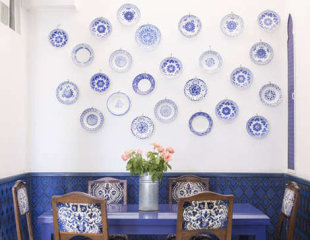 “Quite often, as our clients are contemplating a Home Improvement project they will consult us to make sure they are going to get their money back. This is especially true for those who are thinking of Selling, but realize that they have not done any upgrades since they bought the house 10, 15 or more years ago. Here are some very revealing numbers to consider before you start that next big project.”
“Quite often, as our clients are contemplating a Home Improvement project they will consult us to make sure they are going to get their money back. This is especially true for those who are thinking of Selling, but realize that they have not done any upgrades since they bought the house 10, 15 or more years ago. Here are some very revealing numbers to consider before you start that next big project.”
DC Metro Realty Team – Denise Buck & Ed Johnson
Even the most valuable remodeling projects don’t completely recoup the cost, according to Remodeling Magazine’s annual cost vs. value report. The project with the highest return on investment — installing a steel door — only recoups 97 percent of its cost. That wasn’t always the case. In 2009, steel doors had an ROI of 125 percent. But in 2011, it fell to 73 percent.
These huge swings are due to fluctuations in home prices — and when home prices dropped, so did ROI on remodeling projects. But now that home prices are rising and construction costs are relatively stable, homeowners can expect to see these projects pay off. Here’s what you can expect to pay — and recoup — from some of the most common remodeling projects, from a minor kitchen redo to a two-story addition.
Minor Kitchen Remodel
Average national cost: $18,856
ROI: 82.7 percent
While any kitchen remodel will add some value to your home, less is more when it comes to ROI. If you’re remodeling on a budget, focus on a few key areas: Replace dated appliances with more modern, stainless steel models; replace aging countertops with sturdier materials that you can afford; replace cabinet hardware (but leave the boxes in place); and apply a fresh coat of paint or add a new backsplash.
Major Kitchen Remodel
Average national cost: $54,909
ROI: 74.2 percent
Any real estate agent will tell you to invest your time and money in the kitchen if you want to add value to your home. Why? Because kitchens make a big impression — and home buyers want them to be modern, functional and well-maintained. The average cost of a major kitchen remodel is high, but includes a complete gutting — from cabinets to appliances to flooring and replacing them with modern mid-range materials.
Be careful not to go too far with kitchen remodels. Unless you’re living in a high-end, luxury home, you shouldn’t have high-end, luxury appliances (like a top-of-the-line Sub-Zero fridge, for example) or personalized gadgets — they won’t matter to your targeted buyer or add value to your home.
Bathroom Remodel
Average national cost: $16,128
ROI: 72.5 percent
Second to the kitchen, a modern bathroom is high on many home buyers’ wish lists. The average cost of a bathroom remodel includes replacing a porcelain-on-steel tub, shower head, toilet, sink, vanity, as well as floor and wall tiles. But you don’t have to do all that to boost your home’s value. To get the biggest bang for your buck, keep the tub, toilet and sink and focus on replacing the vanity surface with solid material (think: granite, quartz, marble), installing better faucets and a shower head and updating tiles around the shower. These surface additions are more visible and reflect taste prospective buyers will appreciate.
Basement Remodel
Average national cost: $62,834
ROI: 77.6 percent
There’s a reason you see “finished basement” advertised in so many home listings — it’s an attractive feature. To get the full value out of your remodel, you want the basement to provide space for entertaining your family or guests. It should be big (and finished) enough to be a truly useful space. The average cost of a basement remodel includes adding a bathroom with a glass shower, a 20×30 foot entertaining area with a wet bar, insulated walls and laminate flooring. However, keep in mind that below-grade rooms like basements don’t add as much value as above-grade rooms, like an attic conversion.
Attic Conversion
Average national cost: $49,438
ROI: 84.3 percent
Converting your attic into a livable space accomplishes two things that add value: It adds square footage and a bedroom without increasing the footprint of the home. By adding that extra space, particularly a bedroom, you’ve moved your home into a new category — a four bedroom instead of a three bedroom, for example — and that’s guaranteed added value. Remodeling Magazine’s average cost includes a bathroom, which does add value, but can be cost-prohibitive in some attics.
Two-Story Addition
Average national cost: $155,365
ROI: 71.8 percent
Adding on space — specifically a family room, bedroom and bathroom — will always add value to your house, but it’s hard to completely recoup such a high cost. However, when adding onto a home, you’re probably thinking more about creating more space for yourself than the next owner, which to many people may be worth the money.
Deck
Average national cost: $9,539 for wood, $15,437 for composite
ROI: 87.4 percent for wood, 74.3 percent for composite
Outdoor living spaces are becoming more popular, and that means buyers are willing to shell out more money for homes that have these outdoor entertainment spaces. While wood decks add more value and cost less, they typically come with more maintenance costs (like staining) over time to maintain the wood.
Ilyce Glink is an award-winning author, columnist, radio talk show host and blogger who specializes in real estate and personal finance. Her articles appear on Yahoo, AOL, CBS News, and numerous blogs. Find her online at ThinkGlink.com.
 “You know you want to do something new and different on a wall, but you don’t want to spend a lot of money. There are any number of ways to change up a wall and make it look and feel different, using items already in your home.”
“You know you want to do something new and different on a wall, but you don’t want to spend a lot of money. There are any number of ways to change up a wall and make it look and feel different, using items already in your home.”



















